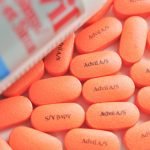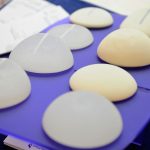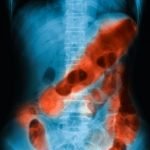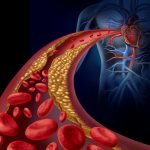Anxiety, Depression, and PTSD
Alternative and Complementary Therapy Options
JOHN HAHN, DPM, ND
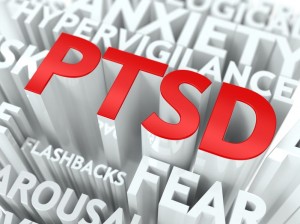 Post-traumatic stress disorder (PTSD) is an anxiety disorder that can occur after exposure to extreme traumatic events, such as natural disasters (eg, floods, car accidents, fire) or man-made trauma (eg, war camps, torture, wars).1 The core symptoms and diagnostic criteria, according to the American Psychiatric Association’s DSM (III, III-R, and IV), are the re-experience of the trauma; numbing of responsiveness and avoidance; and hyperarousal. The condition is highly prevalent, with considerable morbidity, as well as high comorbidity with other psychiatric disorders, such as major depression.1
Post-traumatic stress disorder (PTSD) is an anxiety disorder that can occur after exposure to extreme traumatic events, such as natural disasters (eg, floods, car accidents, fire) or man-made trauma (eg, war camps, torture, wars).1 The core symptoms and diagnostic criteria, according to the American Psychiatric Association’s DSM (III, III-R, and IV), are the re-experience of the trauma; numbing of responsiveness and avoidance; and hyperarousal. The condition is highly prevalent, with considerable morbidity, as well as high comorbidity with other psychiatric disorders, such as major depression.1
Natural Agents for Mood Disorders
Natural therapies utilizing a combination of vitamins, herbal extracts, and amino acids have shown clinical success in patients diagnosed with PTSD or other anxiety disorders, or depression.2 Sample constituents of such a formula include 5-hydroxytrophan (5-HTP), Mucuna pruriens, 5-methyltetrahydrofolate (5-MTHF), vitamin B6, L-tyrosine, Melissa officinalis (lemon balm), and gamma-amino-butyric acid (GABA).
These individual substances have been researched over the years to determine their effects on human physiology. Preliminary observations using a combination of these naturally-occurring substances in a specific ratio suggest dramatic reductions in stress and anxiety in human subjects, as well as an extremely high safety profile.
5-HTP vs L-Tryptophan
The serotonin precursor, 5-HTP, is extracted from the seeds of a plant called Griffonia simpicifolia, which is found mainly in West Central African thickets, usually associated with mounds of the termite, Macrotermes, on plains, in forests, in secondary vegetation, and old farms. Griffonia contains several indole derivatives, including 5-hydroxy-L-tryptophan, indole-3-acetyl-aspartic acid, and 5-hydroxy-indole-3-acetic acid.3
In the serotonin synthesis pathway, 5-HTP is an intermediate metabolite of the amino acid, tryptophan. The advantage of supplemental 5-HTP is that it bypasses the conversion of tryptophan to 5-HTP via the enzyme, tryptophan hydrolase, which is the rate-limiting step in the synthesis of serotonin.4 Tryptophan hydrolase can be inhibited by numerous factors, including stress, vitamin B6 deficiency, insulin resistance, and low magnesium.4 These same factors can also increase the conversion of tryoptophan to kynurenine via tryptophan oxygenase, thereby rendering tryptophan unavailable for serotonin production.4
The metabolite 5-HTP functions as an antioxidant, unlike L-tryptophan (LT), which can actually promote oxidative damage.4 An oral dose of 5-HTP is well absorbed, with about 70% ending up in the bloodstream. Furthermore, absorption of 5-HTP is unaffected by the presence of other amino acids; therefore, it may be taken with meals or other amino acids without reducing its effectiveness.4
Unlike LT, 5-HTP cannot be shunted into niacin or serotonin production. Serotonin levels in the brain are highly dependent upon levels of 5-HTP and LT in the central nervous system. The compound 5-HTP easily crosses the blood-brain barrier without requiring the presence of a transport molecule. LT, on the other hand, requires use of a transport molecule to gain access to the central nervous system (CNS). Since LT shares this transport molecule with several other amino acids, the presence of competing amino acids can inhibit LT transport into the brain.4 The primary action of 5-HTP is to increase levels of serotonin within the CNS.
Other neurotransmitters and CNS chemicals, such as melatonin, dopamine, norepinephrine, and beta endorphin, have shown increased levels following oral administration of 5-HTP.5 The reason for this increase is that 5-HTP does not require the transport molecules to enter the CNS, thus freeing up more transport molecules for other neurotransmitters to cross into the CNS.
5-HTP and Depression
Some 40 clinical studies have evaluated the clinical effectiveness of 5-HTP in both endogenous, unipolar depression and bipolar depression, in which daily oral doses of 5-HTP ranging from 50 to 300 mg TID were shown to be effective.4 Significant improvement was observed in 74 (69%) of the patients, and no significant side effects were reported. The response rate in most of these patients was quite rapid (less than 2 weeks).
Clinical response to 5-HTP (daily oral doses of 150-300 mg) was evaluated in a study of 59 patients with depression.6 Positive responses were observed in 40 of the patients, 13 of whom improved substantially.
A double-blind clinical trial was carried out involving 26 hospitalized, depressed patients who were randomized into 2 groups and administered chlorimipramine (50 mg per day).7 In Group A, chlorimipramine was combined with L-5 HTP (300 mg/day); in Group B, it was combined with placebo. For 28 days, the patients’ depression symptoms were evaluated via standardized questionnaires. Results for both endogenous and reactive depression were more positive for group A than for group B.7
Adverse reactions to 5-HTP may include heartburn, stomach pain, flatulence, diarrhea, and vomiting. Asymptomatic eosinophilia has also been shown to result from 5-HTP treatment.3
Recommended dosages of 5-HTP range from 25 mg BID (for mild mood disorder) to 200-300 mg per day (for depression).3
Mucuna pruriens
Mucuna pruriens (also known as velvet bean) is an annual plant that is a climbing shrub with long vines sometimes reaching beyond 50 meters. It bears white, lavender, or purple flowers in pods, and is covered with loose orange hairs which can cause a severe itch should they come in contact with skin. The chemical compounds responsible for the itch are a protein, mucunain, and serotonin.8
The seeds of Mucuna pruriens contain high concentrations of levodopa, a direct precursor of the neurotransmitter dopamine. It has been used traditionally in Ayurvedic Indian medicine for diseases including Parkinson’s disease. In large amounts (eg, 30 g) it has been shown to be as effective as levodopa/carbidopa in the treatment of Parkinson’s, but no data on long-term efficacy and tolerability is available.9
In addition to levodopa, Mucuna contains 5-HTP, nicotine, N,N-DMT, bufotenine, and 5-MeO-DMT.9 Due to its dopamine-inducing properties, Mucuna in combination with other supplements can stimulate the cholinergic system, giving the patient greater motivation and confidence.8
5-Methyltetrahydrofolate
5-Methyltetrahydrofolate (5-MTHF) is the active form of folic acid and is capable of passing through the blood-brain barrier. It is a member of the B-complex family of vitamins, and works in concert with vitamin B12. In addition to being a methyl-group donor involved in many body processes, 5-MTHF is necessary for DNA synthesis. Therapeutically, folic acid can reduce homocysteine levels and the occurrence of neural tube defects; it also may play a role in preventing cervical dysplasia and protecting against neoplasia in ulcerative colitis.10
Neuropsychiatric conditions that can be secondary to folate deficiency include dementia, schizophrenia-like syndromes, insomnia, irritability, forgetfulness, organic psychosis, peripheral neuropathy, myelopathy, restless leg syndrome, and endogenous depression.10,11,12 Serum and RBC folate concentrations, low levels of which have been linked with depression, often increase with 5-MTHF supplementation.13 Folate deficiency may also predict a poor response to some antidepressant medications.
Research supports the hypothesis that lithium carbonate may enhance serotonin (5-HT) receptor sensitivity, whereas tricyclic antidepressants and second-generation antidepressant medications diminish 5-HT receptor sensitivity.14 A syndrome characterized by mild depression, muscular and intellectual fatigue, restless legs, depressed ankle jerk reflexes, diminution of vibration sensation in the legs, stocking-type hypoesthesia, and chronic constipation has been shown to respond to folic acid supplementation of 5-10 mg per day for 6-12 months.11
Vitamin B6
Vitamin B6 (also known as pyridoxine and pyridoxal-5-phosphate) was first isolated in 1934. Pyridoxal-5-phosphate (P5P) is the metabolically active coenzyme form of B6, and is also the main circulating form of the vitamin, exported from the liver. P5P is considered the most relevant direct measure of B6 status.15 P5P is a cofactor for enzymes involved in the synthesis of many neurotransmitters and hormones, including serotonin and GABA, key players in mood regulation.15 In a study of elderly subjects, low level of plasma P5P were found to double the likelihood of depression.16
L-Tyrosine
L-Tyrosine is involved in the synthesis of neurotransmitters in the brain by serving as a precursor to L-dopa, dopamine, norepinephrine, and epinephrine.17 Oral administration of L-tyrosine increases brain concentrations and activity of these neurotransmitters, and has shown benefit in depressed patients.18 Cofactors required for tyrosine metabolism include biopterin (a folate derivative), NADPH and NADH (forms of niacin), copper, and vitamin C. Tyrosine is also a precursor to thyroid hormones.
Therapeutic dosages of 100 mg/kg per day of L-tyrosine have demonstrated effectiveness in patients with depression.18 L-tyrosine has also been reported to help with cocaine and nicotine addiction, as well as in decreasing appetite, possibly via enhanced production of catecholamines.19
Melissa Officinalis
Melissa officinalis (lemon balm) has been used historically as an anxiolytic, as it acts as a mild sedative and calming agent. One double-blind, placebo-controlled, randomized crossover study showed Melissa to be effective at reducing stress, while increasing calmness and alertness. Both 300 and 600-mg dosages were effective.20 Lemon balm extract (particularly its rosemarinic constituent) has been identified as a potent in vitro inhibitor of GABA transaminase, the net result of which would be higher GABA concentrations; this might explain the anxiolytic effect of lemon balm.21
GABA
Gamma-amino butyric acid, (GABA), is the most important inhibitory neurotransmitter in the mature brain. Low levels of GABA have been linked to anxiety, depression, and insomnia.22 GABA was first synthesized in 1883, and is available in an oral form as a nutritional supplement. One human study suggests that orally administered GABA increases the amount of human growth hormone, both at rest and after resistance exercise.23
Summary
In summary, PTSD, anxiety, and depression are all highly-prevalent disorders. However, there are a variety of herbal and nutritional agents available that have been clinically proven for the treatment of these conditions, including 5-HTP, Mucuna pruriens, 5-MTHF, vitamin B6, L-tyrosine, Melissa officinalis, and GABA.
 John Hahn, DPM, ND completed his undergraduate studies at American River College and Sacramento State University, then attended the California College of Podiatric Medicine in San Francisco where he received his Bachelor of Science and Doctor of Podiatric Medicine degrees. Dr Hahn completed his surgical residency at the California Podiatry Hospital in San Francisco, , and is board-certified in foot surgery by the American Board of Podiatric Surgery. He received his Doctor of Naturopathic Medicine from NCNM in Portland, OR, and is an active member of the OANP and the APMA. Dr Hahn has served as a clinical instructor at the Oregon Health Science University and the Veterans Administration Hospital in Portland, OR, in podiatry. He has also taught as an adjunct professor at Pioneer Pacific College, Clackamas Community College, and the New York College of Podiatric Medicine. Dr Hahn practices naturopathic medicine in conjunction with podiatric medicine utilizing nutraceutical and homeopathic treatments for various medical conditions. He has also formulated several nutraceutical products currently on the market.
John Hahn, DPM, ND completed his undergraduate studies at American River College and Sacramento State University, then attended the California College of Podiatric Medicine in San Francisco where he received his Bachelor of Science and Doctor of Podiatric Medicine degrees. Dr Hahn completed his surgical residency at the California Podiatry Hospital in San Francisco, , and is board-certified in foot surgery by the American Board of Podiatric Surgery. He received his Doctor of Naturopathic Medicine from NCNM in Portland, OR, and is an active member of the OANP and the APMA. Dr Hahn has served as a clinical instructor at the Oregon Health Science University and the Veterans Administration Hospital in Portland, OR, in podiatry. He has also taught as an adjunct professor at Pioneer Pacific College, Clackamas Community College, and the New York College of Podiatric Medicine. Dr Hahn practices naturopathic medicine in conjunction with podiatric medicine utilizing nutraceutical and homeopathic treatments for various medical conditions. He has also formulated several nutraceutical products currently on the market.
References:
1. American Psychiatric Association. Diagnostic and Statistical Manual of Mental Disorders. 3rd ed (1980), 3rd ed, revised (1987); 4th ed (1994). Washington, DC: American Psychiatric Association.
2. Freeman MP, Helgason C, Hill RA , Selected integrative medicine treatments for depression: considerations for women. J Am Med Womens Assoc. 2004 Summer;59(3):216224.
3. The Many Uses of 5-HTP: Bottom Line Monograph. Natural Medicine Journal. October 2011;3(10). http://naturalmedicinejournal.com/journal/2011-10/many-uses-5-htp. Accessed March 15, 2014.
4. [No authors listed] 5-hydroxytryptophan. Altern Med Rev. 1998 Jun;3(3):224-226.
5. Den Boer JA, Westenberg HG. Behavioral, neuroendocrine, and biochemical effects of 5-hydroxytryptophan administration in panic disorders. Psychiatry Res. 1990;31(3):267-278.
6. Nakajima T, Kudo, Y,Kaneko Z. Clinical evaluation of 5-hydroxy-L-tryptophan as an antidepressant. Folia Psychiatr Neurol Jpn. 1978;32(2):223-230.
7. Nardini M, De Stefano R, Iannuccelli M, et al. Treatment of depression with L-5-hydroxytryptophan combined with chlorimipramine, a double-blind study. Int J Clin Pharmacol Res. 1983;3(4):239-250.
8. Gentcare Natural Ingredients. Mucuna pruriens extract. Gentcare Web site. http://www.gentcare.com/products_detail/&productId=b3e060fe-c91a-44db-9c2e-f6323ef0757d.html. Accessed March 15, 2014.
9. Katzenschlager R1, Evans A, Manson A, et al. Mucuna pruriens in Parkinson’s disease: a double blind clinical and pharmacological study. J Neurol Neurosurg Psychiatry. 2004;75(12):1672-1677.
10. [No authors listed] Folic acid. Monograph. Altern Med Rev. 2005;10(3):222-229.
11. Botez MI. Folate deficiency and neurological disorders in adults. Med Hypotheses. 1976;2(4):135-140.
12. Young SN. Ghadirian AM. Folic Acid and Psychopathology. Progressive NeuropPsychopharmacol Biol Psychiatry. 1989;13(6):841-863.
13. Fava M, Mischoulon D. Folate in depression: efficacy, safety, differences in formulations, and clinical issues. J Clin Psychiatry. 2009;70 Suppl 5:12-7.
14. Meltzer HY, Lowy M, Robertson A, et al. Effect of 5-hydroxytryptophan on serum cortisol levels in major affective disorders. III. Effect of antidepressants and lithium carbonate. Arch Gen Psychiatry. 1984;41(4):391-397.
15. [No authors listed] Vitamin B6 (pyridoxine and pyridoxal 5′-phosphate) – monograph. Altern Med Rev. 2001;6(1):87-92.
16. Merete C, Falcon LM, Tucker KL. Vitamin B6 is associated with depressive symptomatology in Massachusetts elders. J Am Coll Nutr. 2008;27(3):421-427.
17. [No authors listed] L-tyrosine. Monograph. Altern Med Rev. 2007;12(4):364-368.
18. Gelenberg AJ, Wojcik JD, Gibson CJ, Wurtman RJ. Tyrosine for depression. J Psychiatr Res. 1982-1983;17(2):175-180.
19. Tyrosine: Clinical Use. Dosage. Medicinal Plants. http://medicinalplants.us/tyrosine-clinical-use-dosage. Accessed March 15, 2014.
20. Kennedy DO, Little, W, Scholey AB. Attenuation of laboratory-induced stress in humans after acute initiation of Melissa officinalis (Lemon Balm). Psychosom Med. 2004;66(4):607-613.
21. Awad R, Muhammad A, Durst T, et al. Bioassay-guided fractionation of lemon balm (Melissa officinalis L.) using an in vitro measure of GABA transaminase activity. Phytother Res. 2009;23(8):1075-1081.
22. [No authors listed] Gamma-aminobutyric acid (GABA), Monograph. Altern Med Rev. 2007;12(3):274-279.
23. Powers ME, Yarborough JF, McCoy SC, Borst SE. Growth hormone isoform responses to Ingestion at rest and after exercise. Med Sci Sports Exerc. 2008;40(1):104-110.




